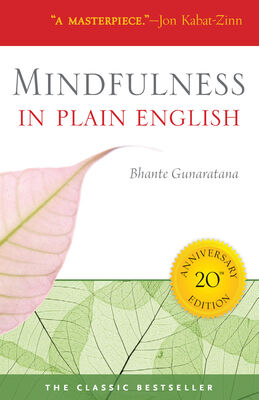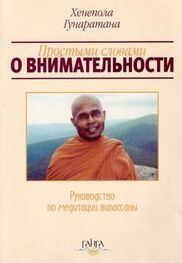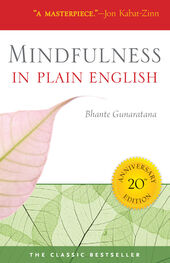Chapter 15
Meditation In Everyday Life
Every musician plays scales. When you begin to study the piano, that’s the first thing you learn, and you never stop playing scales. The finest concert pianists in the world still play scales. It’s a basic skill that can’t be allowed to get rusty.
Every baseball player practices batting. It’s the first thing you learn in Little League, and you never stop practicing. Every World Series game begins with batting practice. Basic skills must always remain sharp.
Seated meditation is the arena in which the meditator practices his own fundamental skills. The game the meditator is playing is the experience of his own life, and the instrument upon which he plays is his own sensory apparatus. Even the most seasoned meditator continues to practice seated meditation, because it tunes and sharpens the basic mental skills he needs for his particular game. We must never forget, however, that seated meditation itself is not the game. It’s the practice. The game in which those basic skills are to be applied is the rest of one’s experiential existence. Meditation that is not applied to daily living is sterile and limited.
The purpose of Vipassana meditation is nothing less than the radical and permanent transformation of your entire sensory and cognitive experience. It is meant to revolutionize the whole of your life experience. Those periods of seated practice are times set aside for instilling new mental habits. You learn new ways to receive and understand sensation. You develop new methods of dealing with conscious thought, and new modes of attending to the incessant rush of your own emotions. These new mental behaviors must be made to carry over into the rest of your life.
Otherwise, meditation remains dry and fruitless, a theoretical segment of your existence that is unconnected to all the rest. Some effort to connect these two segments is essential. A certain amount of carry-over will take place spontaneously, but the process will be slow and unreliable. You are very likely to be left with the feeling that you are getting nowhere and to drop the process as unrewarding.
One of the most memorable events in your meditation career is the moment when you first realize that you are meditation in the midst of some perfectly ordinary activity. You are driving down the freeway or carrying out the trash and it just turns on by itself. This unplanned outpouring of the skills you have been so carefully fostering is a genuine joy. It gives you a tiny window on the future. You catch a spontaneous glimpse of what the practice really means. The possibility strikes you that this transformation of consciousness could actually become a permanent feature of your experience. You realize that you could actually spend the rest of your days standing aside from the debilitating clamoring of your own obsessions, no longer frantically hounded by your own needs and greed. You get a tiny taste of what it is like to just stand aside and watch it all flow past. It’s a magic moment.
That vision is liable to remain unfulfilled, however, unless you actively seek to promote the carry-over process. The most important moment in meditation is the instant you leave the cushion. When your practice session is over, you can jump up and drop the whole thing, or you can bring those skills with you into the rest of your activities.
It is crucial for you to understand what meditation is. It is not some special posture, and it’s not just a set of mental exercises. Meditation is a cultivation of mindfulness and the application of that mindfulness once cultivated. You do not have to sit to meditate. You can meditate while washing the dishes. You can meditate in the shower, or roller skating, or typing letters. Meditation is awareness, and it must be applied to each and every activity of one’s life. This isn’t easy.
We specifically cultivate awareness through the seated posture in a quiet place because that’s the easiest situation in which to do so. Meditation in motion is harder. Meditation in the midst of fast-paced noisy activity is harder still. And meditation in the midst of intensely egoistic activities like romance or arguments is the ultimate challenge. The beginner will have his hands full with less stressful activities.
Yet the ultimate goal of practice remains: to build one’s concentration and awareness to a level of strength that will remain unwavering even in the midst of the pressures of life in contemporary society. Life offers many challenges and the serious meditator is very seldom bored.
Carrying your meditation into the events of your daily life is not a simple process. Try it and you will see. That transition point between the end of your meditation session and the beginning of ‘real life’ is a long jump. It’s too long for most of us. We find our calm and concentration evaporating within minutes, leaving us apparently no better off than before. In order to bridge this gulf, Buddhists over the centuries have devised an array of exercises aimed at smoothing the transition. They take that jump and break it down into little steps. Each step can be practiced by itself.
1. Walking Meditation
Our everyday existence is full of motion and activity. Sitting utterly motionless for hours on end is nearly the opposite of normal experience. Those states of clarity and tranquility we foster in the midst of absolute stillness tend to dissolve as soon as we move. We need some transitional exercise that will teach us the skill of remaining calm and aware in the midst of motion. Walking meditation helps us make that transition from static repose to everyday life. It’s meditation in motion, and it is often used as an alternative to sitting. Walking is especially good for those times when you are extremely restless. An hour of walking meditation will often get you through that restless energy and still yield considerable quantities of clarity. You can then go on to the seated meditation with greater profit.
Standard Buddhist practice advocates frequent retreats to complement your daily sitting practice. A retreat is a relatively long period of time devoted exclusively to meditation. One or two day retreats are common for lay people. Seasoned meditators in a monastic situation may spend months at a time doing nothing else. Such practice is rigorous, and it makes sizable demands on both mind and body. Unless you have been at it for several years, there is a limit to how long you can sit and profit. Ten solid hours of the seated posture will produce in most beginners a state of agony that far exceeds their concentration powers. A profitable retreat must therefore be conducted with some change of posture and some movement. The usual pattern is to intersperse blocks of sitting with blocks of walking meditation. An hour of each with short breaks between is common.
To do the walking meditation, you need a private place with enough space for at least five to ten paces in a straight line. You are going to be walking back and forth very slowly, and to the eyes of most Westerners, you’ll look curious and disconnected from everyday life. This is not the sort of exercise you want to perform on the front lawn where you’ll attract unnecessary attention. Choose a private place.
The physical directions are simple. Select an unobstructed area and start at one end. Stand for a minute in an attentive position. Your arms can be held in any way that is comfortable, in front, in back, or at your sides. Then while breathing in, lift the heel of one foot. While breathing out, rest that foot on its toes. Again while breathing in, lift that foot, carry it forward and while breathing out, bring the foot down and touch the floor. Repeat this for the other foot. Walk very slowly to the opposite end, stand for one minute, then turn around very slowly, and stand there for another minute before you walk back. Then repeat the process. Keep you head up and you neck relaxed. Keep your eyes open to maintain balance, but don’t look at anything in particular. Walk naturally. Maintain the slowest pace that is comfortable, and pay no attention to your surroundings. Watch out for tensions building up in the body, and release them as soon as you spot them. Don’t make any particular attempt to be graceful. Don’t try to look pretty. This is not an athletic exercise, or a dance. It is an exercise in awareness. Your objective is to attain total alertness, heightened sensitivity and a full, unblocked experience of the motion of walking. Put all of your attention on the sensations coming from the feet and legs. Try to register as much information as possible about each foot as it moves. Dive into the pure sensation of walking, and notice every subtle nuance of the movement. Feel each individual muscle as it moves. Experience every tiny change in tactile sensation as the feet press against the floor and then lift again.
Читать дальше





